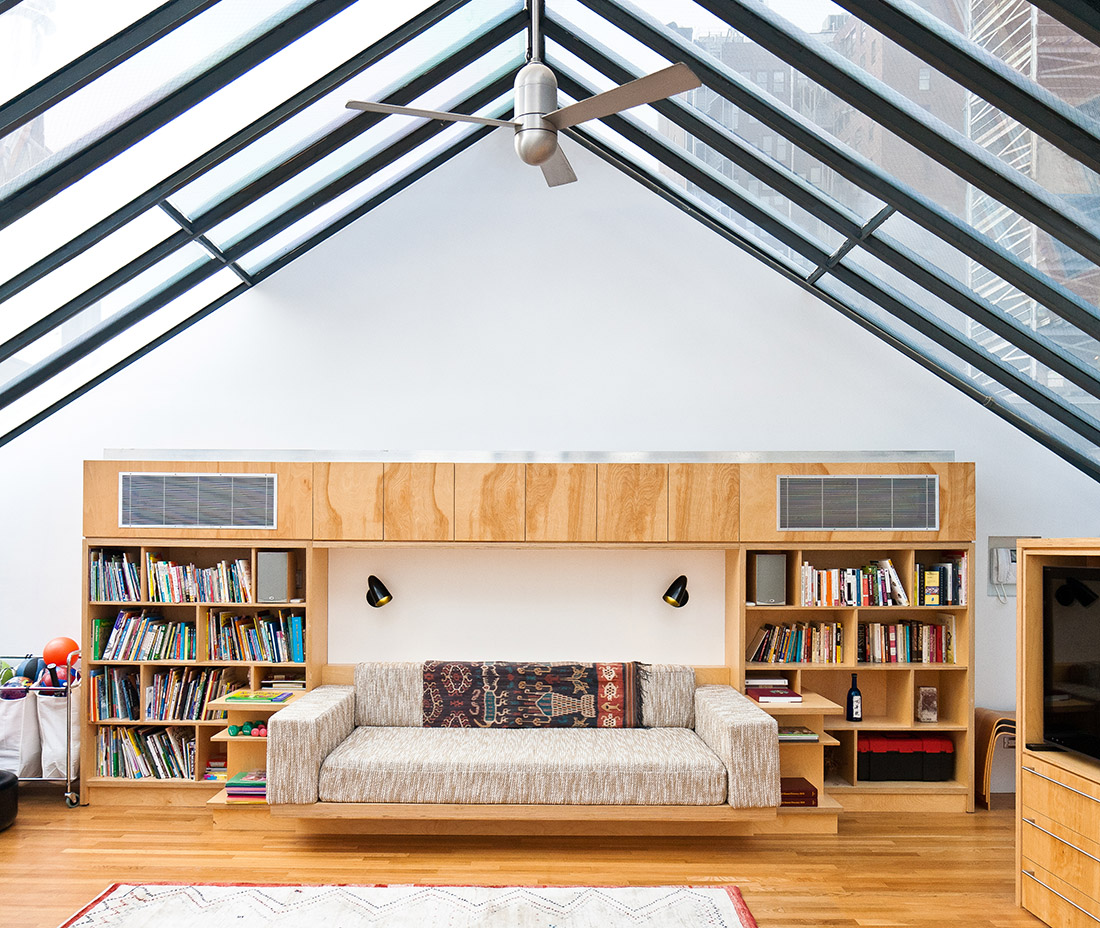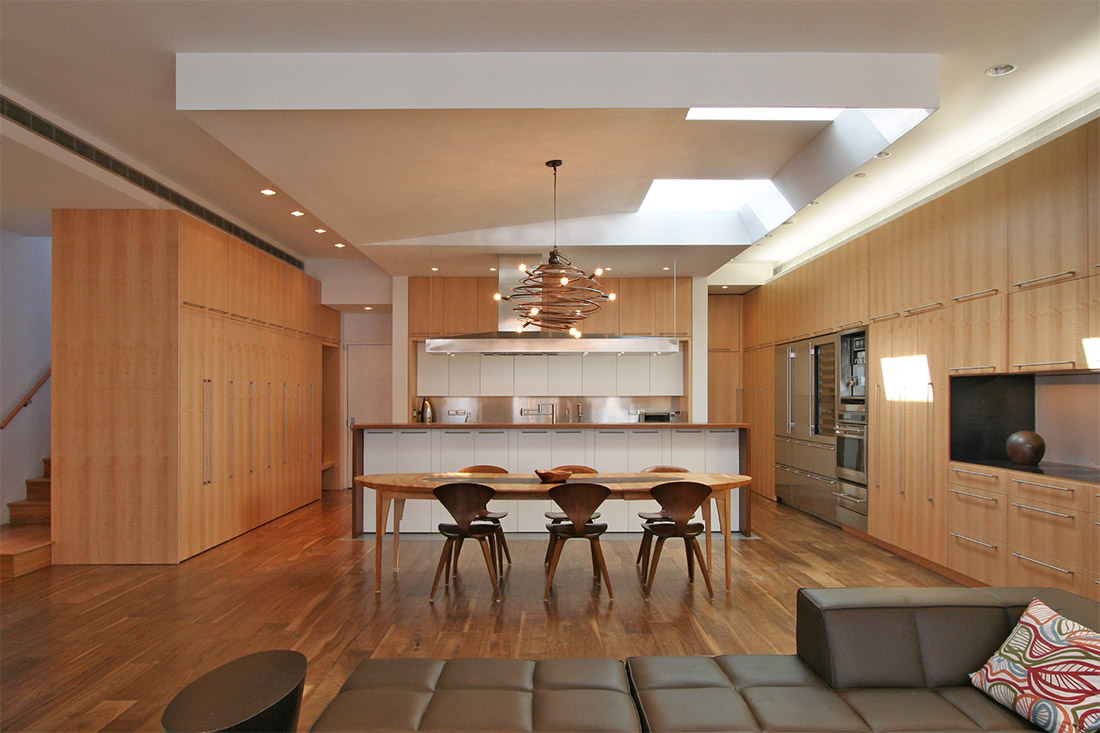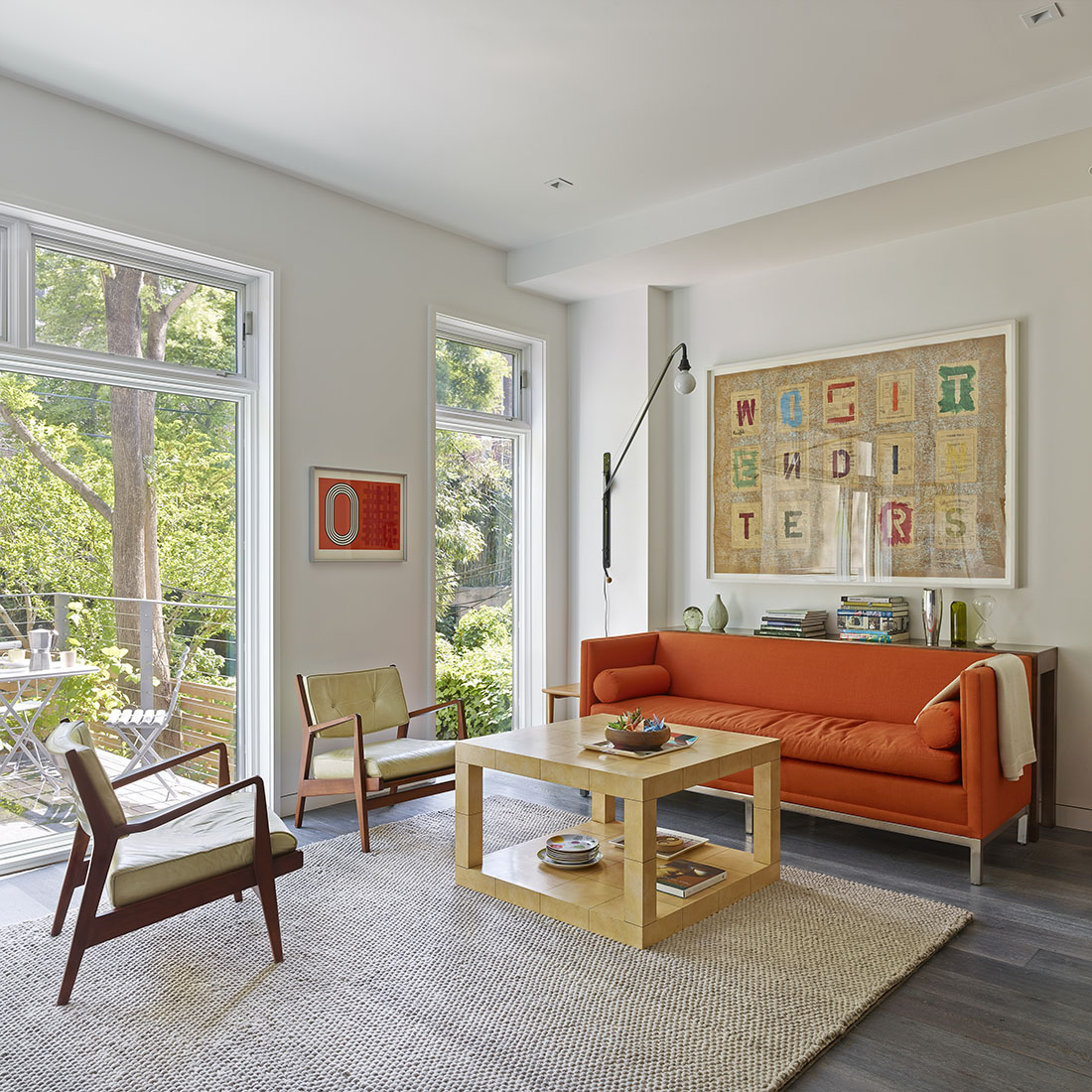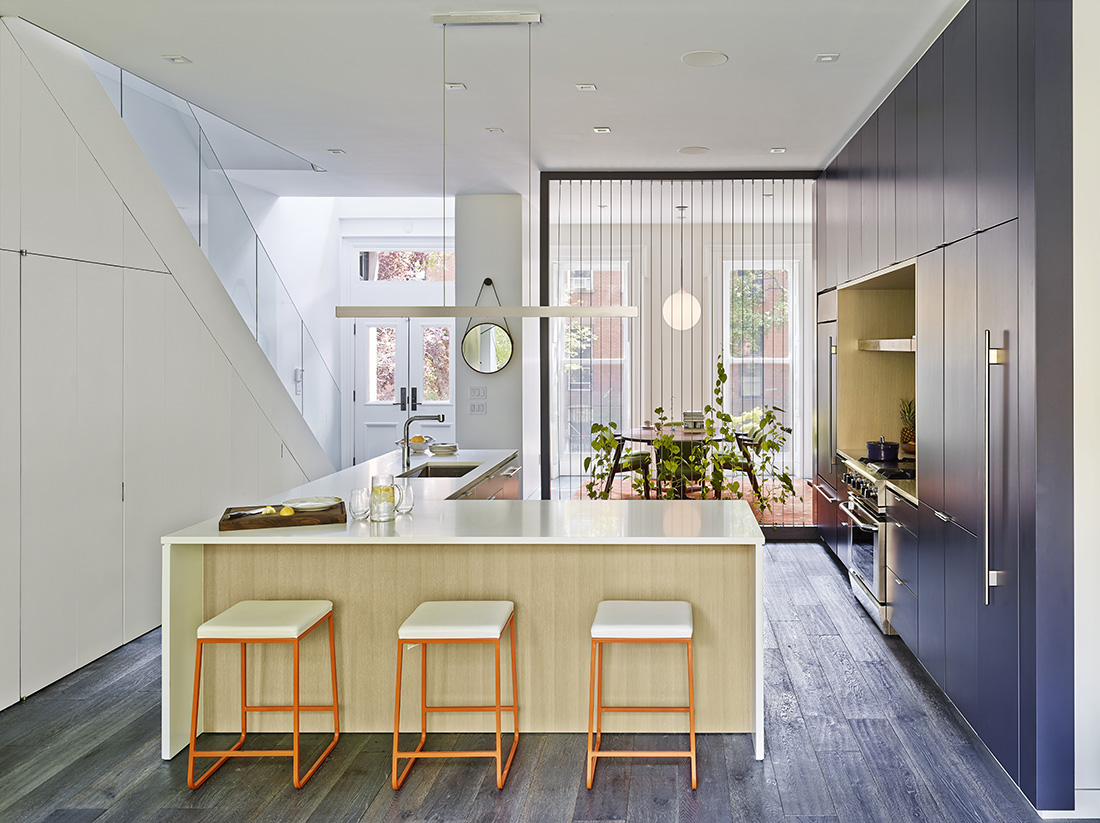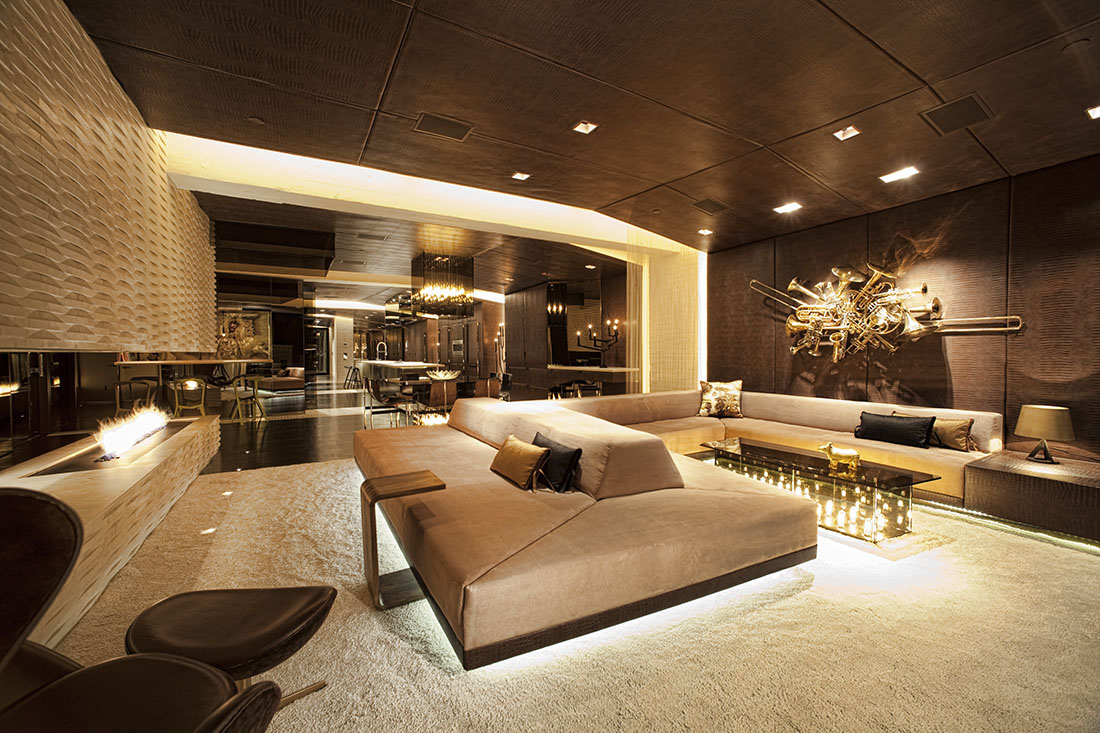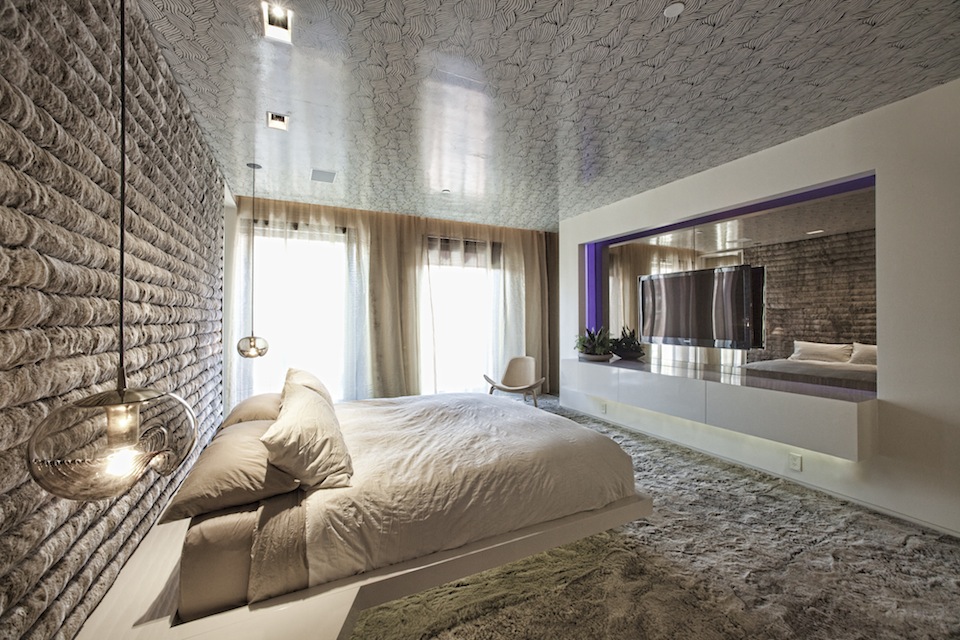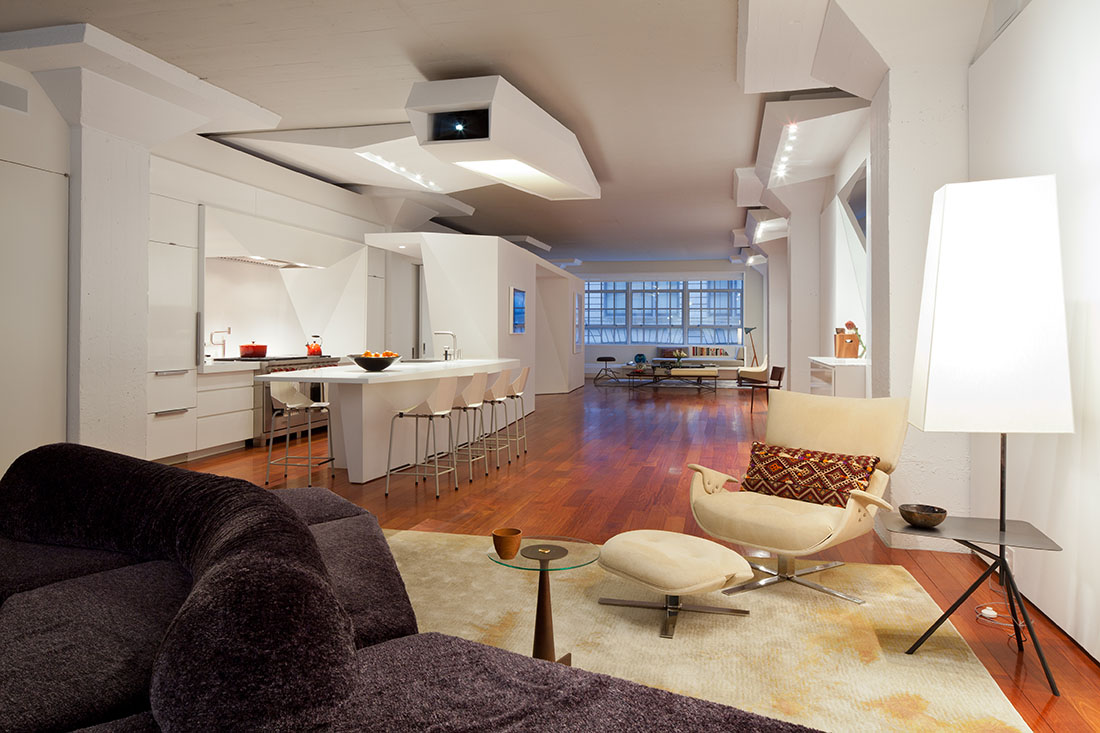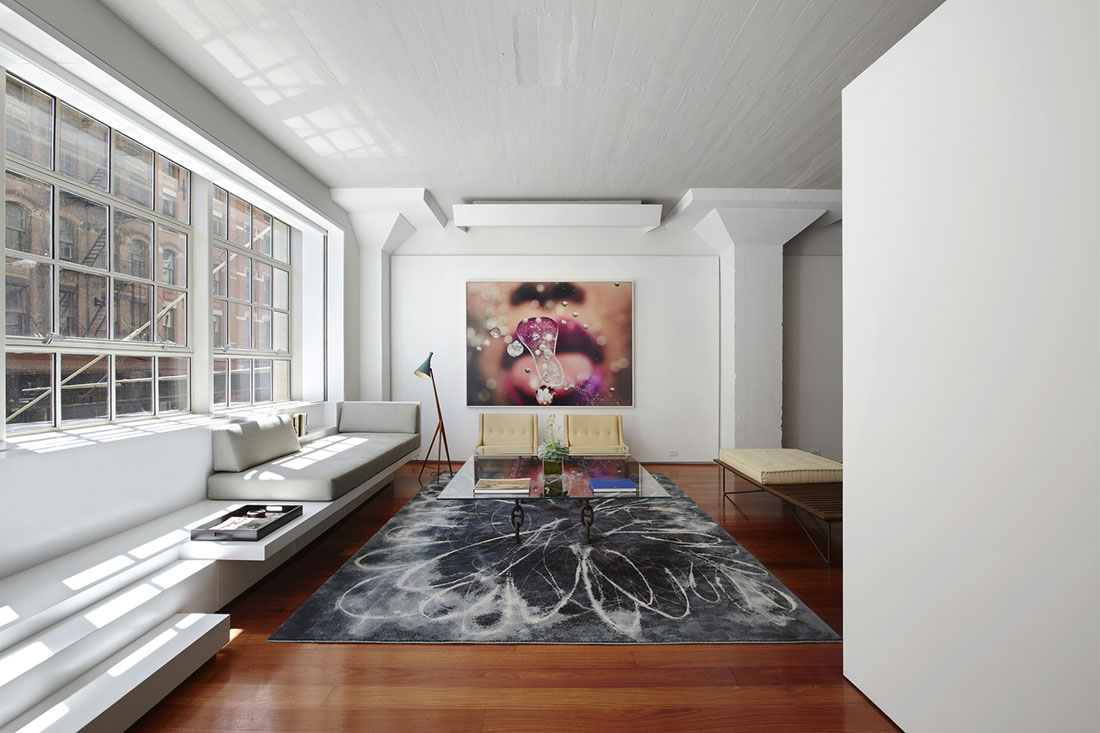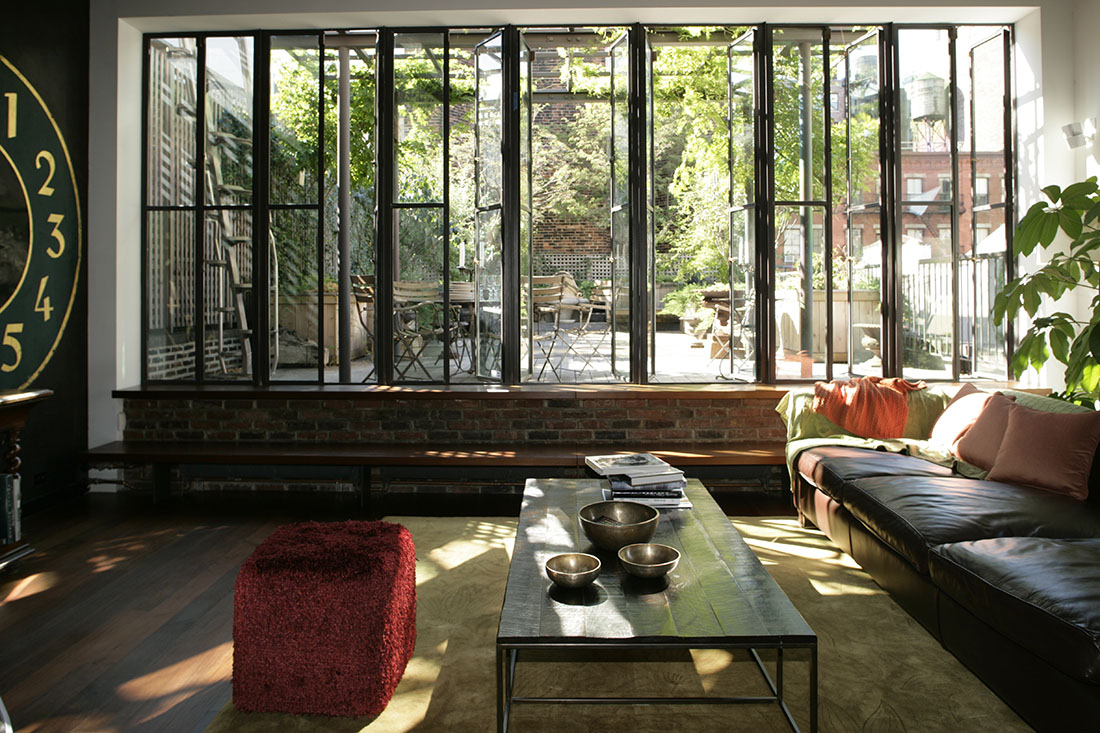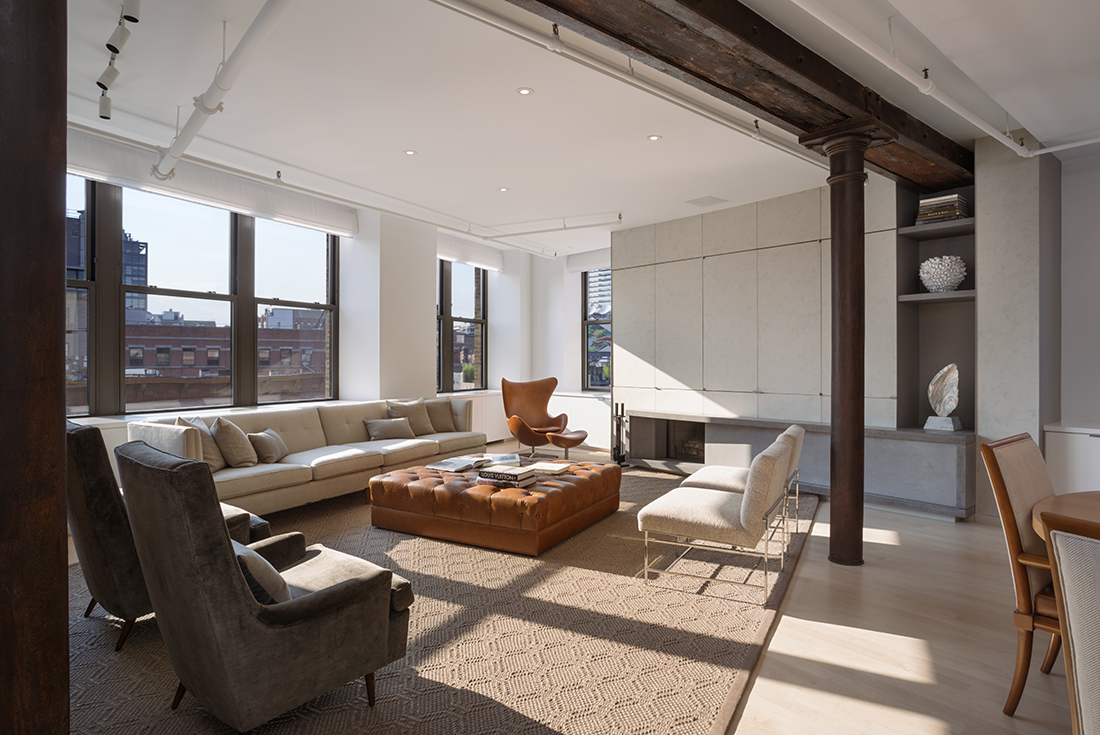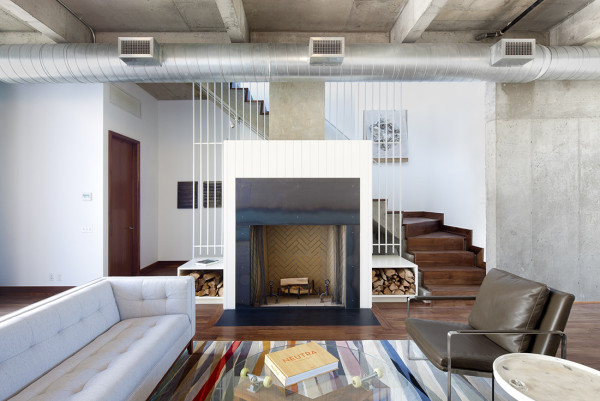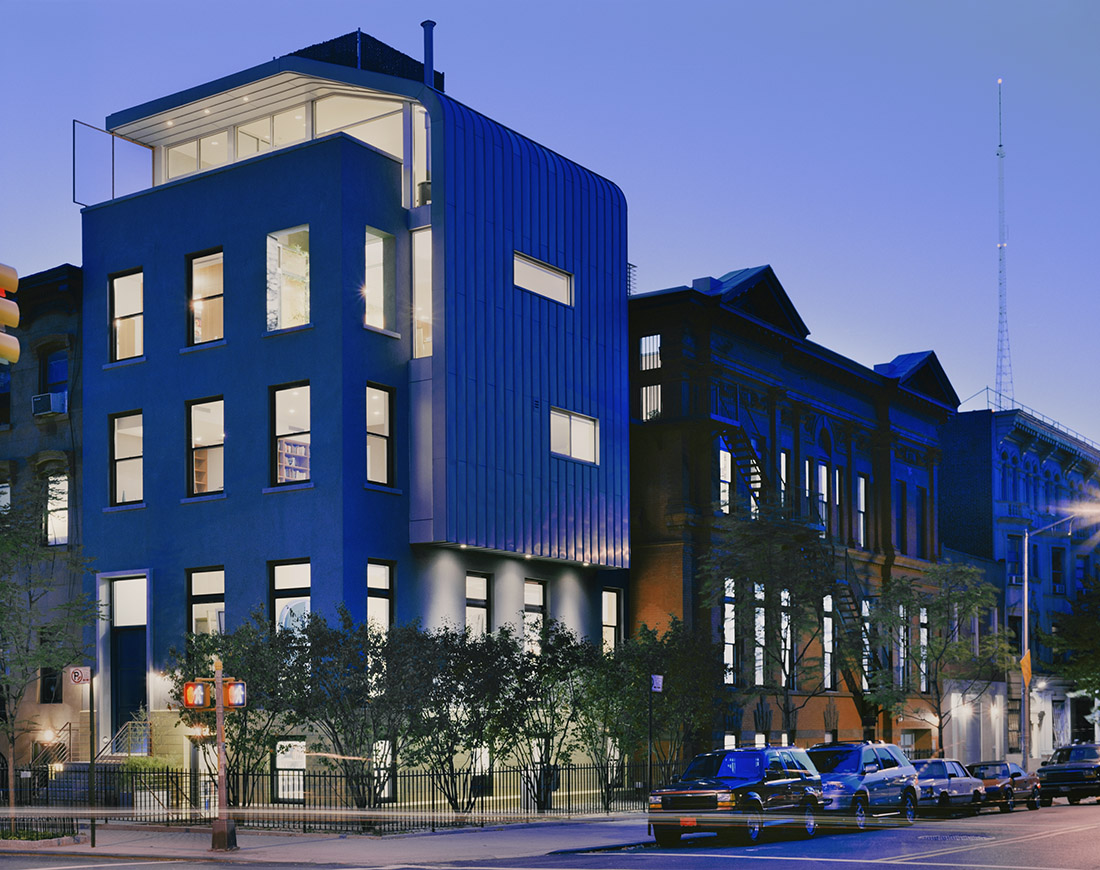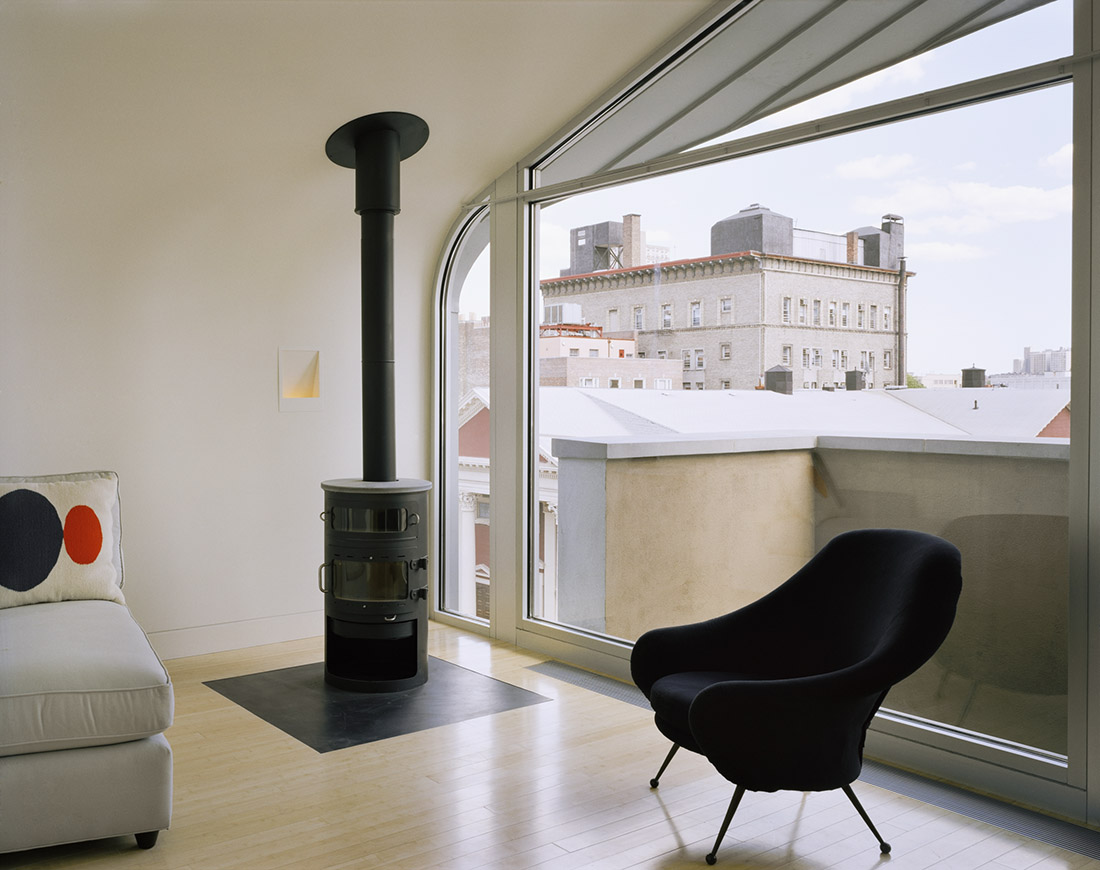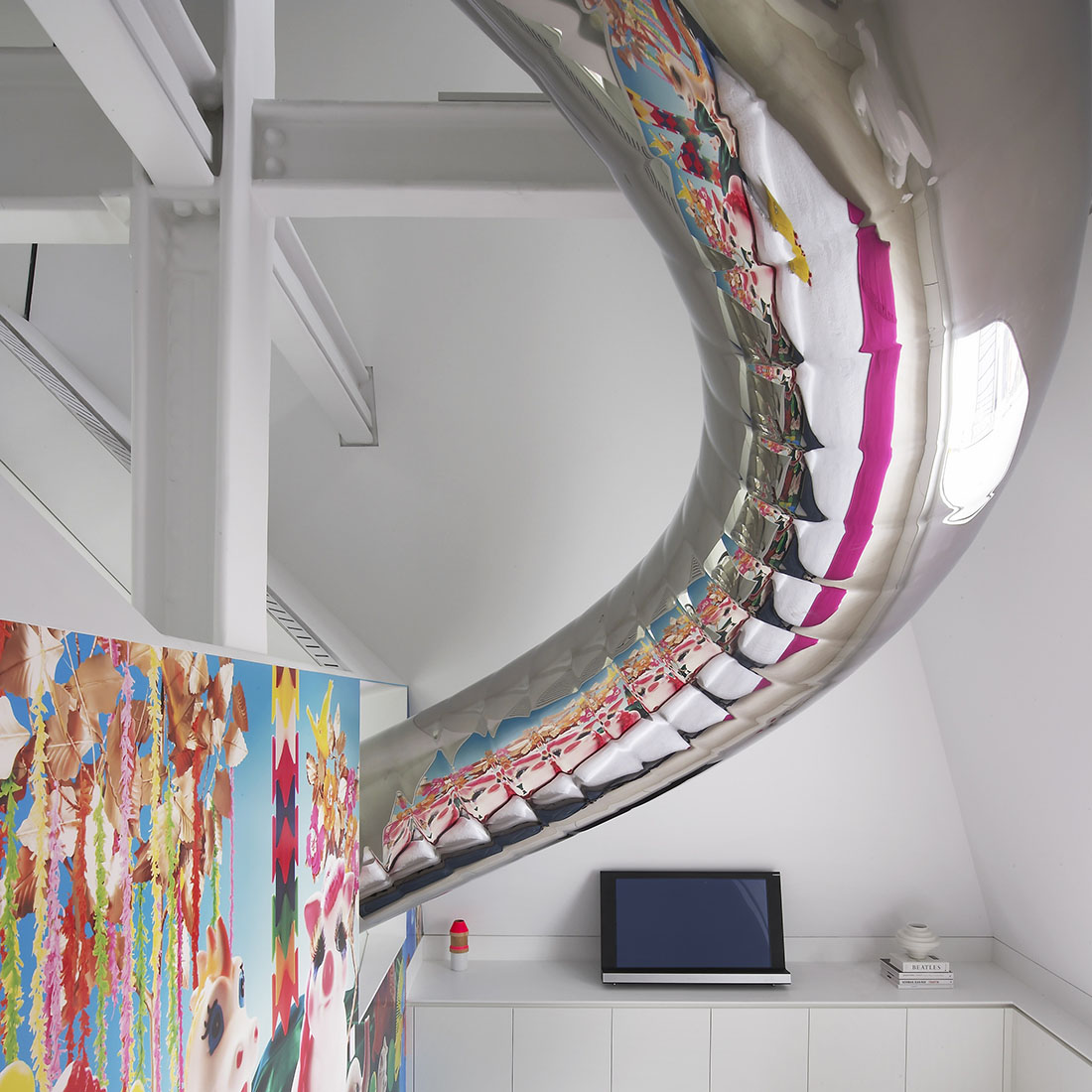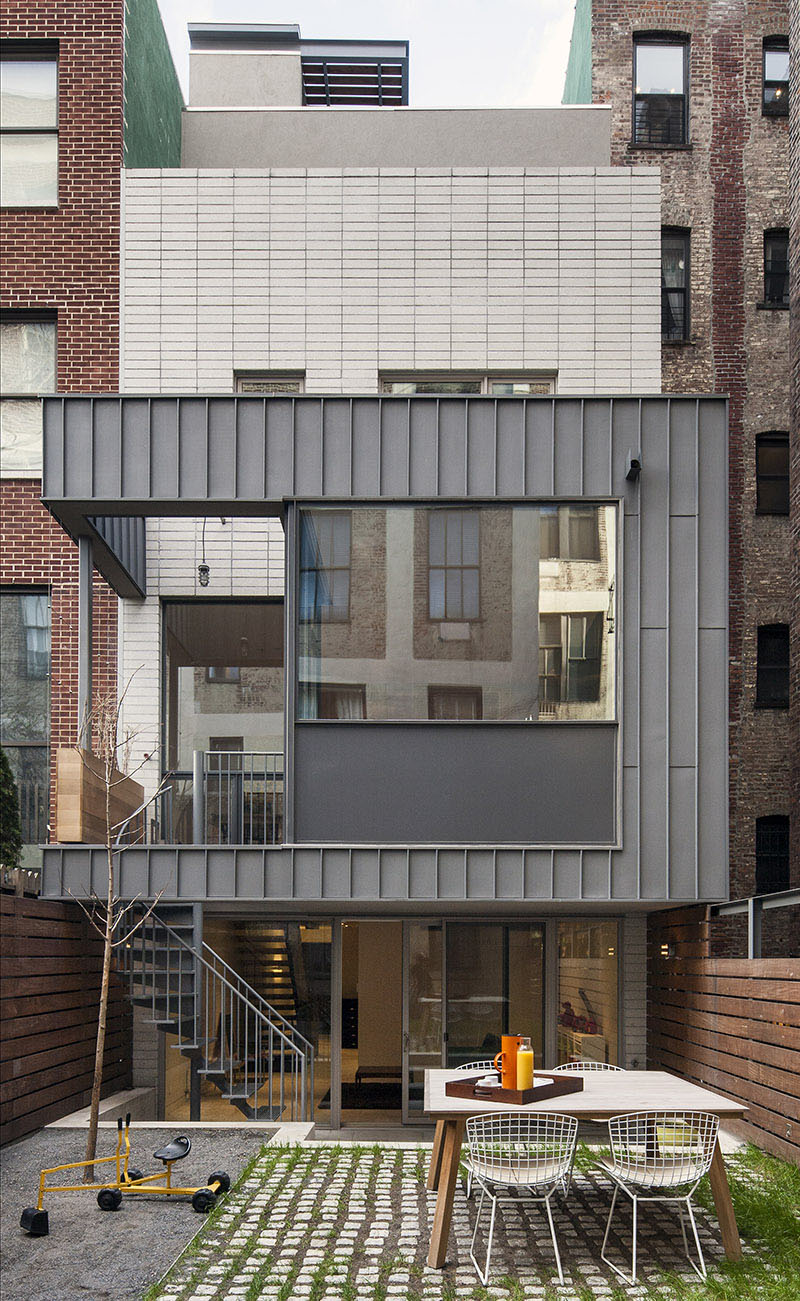Dwell Media and New York magazine are back this fall with City Modern, their 2nd annual collaboration celebrating the best in New York design and architecture. In association with AIANY’s Archtober Festival, and the many other organizations celebrating design this October, City Modern again looks to elevate the level of discussion and awareness about how design effects all areas of our urban lifestyles. The full list of events can be found in the October issue of Dwell (on newsstands now) and New York’s fall preview issue, and also at www.citymodernnyc.com
14th street Loft
Architect: Resolution 4 Architecture
www.re4a.com
Biography:
In 1990 partners Robert Luntz and Joe Tanney founded Resolution: 4 Architecture in an effort to tackle the shifting landscape of design. As a team, they seek to eliminate the gap between user and space as well as plan for the user’s future needs. Organization is vital to the Resolution 4’s formula and the team frequently designs furniture that is a part of the home. Resolution: 4 Architecture is widely published and celebrated; most notably the firm received the AIA Housing Award for Concepts in Innovation in 2006.
Project Description:
Having worked with the client since 1999, Tanney was enlisted once again in the construction of this family of five’s new home. After purchasing their neighboring apartment, the client sought a space with abundant natural light, storage space and more communal space.
Tanney converted the newly bought studio into the kitchen – which extends the floor into a lounge, and the old home into three bedrooms. One of the most exciting elements of the project is the upstairs solarium that not only fills the apartment with natural light, but also serves as a family room. The floor in the solarium is partially skylights to the below bedroom, which cutely doubles as a stage for the kids’ to perform plays.
At 2000 square feet, this loft is the perfect design for the young family that will undoubtedly need to expand. The cleanliness and organization of the home stems from the custom built storage along the perimeters of most rooms – maximizing space and utilizing every inch are crucial to Tanney’s designs.
Dean Street Townhouse
Architect: Bergen Street Studio
www.bergenstreetstudio.com
Clay Miller Biography:
Clay Miller, founding principal of Bergen Street Studio, was born in Mountainview, California and raised in Dallas, Texas. He holds a Bachelor’s Degree in Art History from Duke University and a Masters of Architecture from the Yale School of Architecture. He worked in the offices of Paul Rudolph, Alex Gorlin, and Maya Lin and was a Senior Associate at the Polshek Partnership. He started his own Brooklyn-based practice in 1998 and has taught architectural design and theory at Parsons, Pratt and Yale. He lives with his family in Brooklyn.
Project Description:
This Dean Street renovation has quite the history – before Miller revived the Brooklyn landmark it was rumored to be a dilapidated meth lab. Transforming this 4,600-square-foot home was a difficult task, with very little structure remaining inside a crumbling exterior. In his restoration Miller emphasized the use of vegetation, creating a green wall to separate the kitchen and dining room, and building out interior green spaces and a green roof. He also brightened up the home with large panels of glass and skylights to connect the four stories. Entering the home, there is an obvious continuity between the inside and outside – a neat summarization of the entirety of the project. The most difficult part of the reconstruction was the refurbishment of the façade, which was in complete disrepair. Miller referred to original photographs of the house to accurately restore the home, as well as the neighbors’ façade, which has been pulled down over the years of neglect. And yet the elegant history is complimented by the modern furnishings inside, which show the best that Brooklyn can offer.
Flavor Paper
Architect: Skylab Architecture
www.skylabarchitecture.com
Jeff Kovel:
Portland-based architect Jeff Kovel founded Skylab as a “laboratory to explore a departure from an industry of mounting standardization.” The award-winning firm has built several private homes and commercial spaces around Portland using techniques and materials that blur the distinction between architecture and design. His latest project, the LEED Platinum Weave Building, is sure to be another Portland landmark. Kovel recently completed an exhibition space showcasing Nike innovation during the U.S Olympic Trials for track & field competition that was named the 2012 Best of Year by Interior Design magazine.
Project Description:
When Jon Sherman was looking for an architect to help him transform a 16,000-square-foot parking garage into a space that could serve as both his home and location for his new wallpaper company in Brooklyn, New York, architect Jeff Kovel came to the rescue with unique a vision. The converted structure on Pacific Street now contains the Flavor Lab, home to Flavor Paper’s design and screen-printing operations, as well as Sherman’s eccentric penthouse.
To support the hand screened printing process, the Flavor Lab houses a darkroom, screen etching equipment, and an ink room where they custom mix all of their colors. The Flavor Paper showroom is located on the second floor and offers clients a unique way to view wallpaper and experience the bespoke offerings. The home was inspired by Flavor Paper’s New Orleans’s roots (the original company was based there before Sherman bought and relocated it to New York) and the unique wallpaper is a focal point in every room, from leather-clad cabinetry and ceilings to furry bedroom walls.
The building’s exterior is also an impressive endeavor in melding art and architecture; illuminated by colored windows set in dark stone, the house appears more like an installation than a home. One of the most captivating features of the home is a Sakura neon sculpture that ascends to a mirrored ceiling – and phenomenal rooftop meadow.
Fractal Pad
Architect: Architecture in Formation – Matthew Bremer
www.architecture-if.com
Biography
After completing residencies at several of New York City’s top architecture firms— including Peter Marino Architects, Pei Cobb Freed Partners, and Ashkar & Paul Associates— Matthew Bremer founded his own firm, Architecture in Formation, in 2001. Bremer and his team are committed to exploring the ever-evolving process of executing projects with imaginative conceptual rigor as well as formal dexterity. Bremer’s work shares an intention to achieve a user-friendly result, while maintaining the unexpected.
Project Description:
In planning the “Fractal Pad”, named for its design grounded in the formal logic of fractal geometry, Bremer was inspired by the allegory of Plato’s Cave. Intending to construct a home that allowed the client to shed the exterior stresses of the world, Bremer designed an abstract domestic landscape to facilitate the appreciation of light, shadow, image and information.
With only southern window exposure, the client installed an extensive electronic wall designed by LA video artist Jeffrey Wells which projects a series of faux windows on the north wall. The floating western walls have become backdrops for the client’s evolving art collection.
The loft’s original rough-hewn concrete columns and slab suggest a look that’s one part futuristic luxury-liner and one part primordial cave—it’s essentially a space that feels carved from the original structure.
Lafayette Townhouse
Architect: Asfour Guzy Architects
www.asfourguzy.com
Peter Guzy:
Asfour Guzy Architects, located in New York City, was founded in 1988 by partners Edward Asfour and Peter Guzy. For over two decades Asfour Guzy has completed hundreds of projects of diverse scales and programs throughout the United States and Europe. In addition to 214 Lafayette Street, projects have included Blue Hill at Stone Barns in Pocantico Hills; New York, a new spa at the Woodstock Inn, in Woodstock, Vermont; Redd restaurant in Yontville in the Napa Valley, California and the beloved Moss design store in Soho, New York. Asfour Guzy Architect was nominated in 2005 by the James Beard Foundation for the Outstanding Restaurant Design in North America for Blue Hill at Stone Barns.
Project Description:
This single home townhouse on Lafayette was constructed in 1909 as a ConEd switching station to be used for the distribution of power in this neighborhood, positioned between Lolita and Soho. The 10,000-square-foot building has a deceptive residential type façade that does not reveal the enormity of the spaces within. It was determined at the start of the design to preserve the character of the old ConEd facility. The powerful brick walls, beams, and vaults were all retained. Rather then create a design that would contrast the existing building with the new portions of construction, Guzy created a unified design for a home and work place.
Numerous structural changes were required to alter the use of the building. The building contained one small stair located behind the street façade, and an original DC current elevator, also located on the street façade. The rear spaces had limited access to light, therefore the street façade needed to be utilized for living spaces. Thus, the stair was removed and a new elevator was installed that only went up to the office and to the main living floor. This freed up many windows for bedrooms. A new central stair became the fundamental design element of the project – an open stair continuously ascends from the entry to the top floor. Several of the tall spaces were in-filled with additional floor space, and, on the ground floor, with the pool.
Natural light is a critical part of every space, especially a home. Every vista is rendered in natural light. From a dense urban environment, through the waters of the pool, around the central void of the living room, and to the outdoors and the open sky, the profile of the cityscape is all encompassing. The result was five different levels that successfully instill the feeling of one large home.
Meatpacking Loft
Architects: Jen and Roy Leone
www.leonedesignstudio.com
Interior Design: Jon Call
www.mrcalldesigns.com
Leone Design Studio:
This Brooklyn-based team of Jen and Roy Leone have designed and built a range of project types and scales, including residential, commercial and pro-bono projects. Their work is a collaborative process that engages clients and artisans to create custom solutions to space and lifestyle. Roy Leone has an extensive background and interest in design/build and is a licensed architect in the states of New York, New Jersey and Pennsylvania. Jennifer Bloom Leone holds a Masters of Architecture from Yale University, where she received the prestigious Winchester Traveling Fellowship. She previously worked for Gluck Plus.
Project Description:
The 2,880-square-foot loft is located in an 1890’s printing factory built by John Jacob Astor in Manhattan’s Meatpacking District. The building, a hybrid structure of heavy timber, cast iron and masonry construction, was converted a century later into loft apartments with little respect to the building’s history or character. Leone’s goal was to create a casual yet luxurious living space that embraced, rather than negated, the industrial quality of the historic structure.
The owners, Thomas and Pauline Nakios, the force behind the women’s clothing line Lilla P, and their two young sons wanted a space to accommodate their lifestyle while reflecting their personality and taste. The renovation took the loft from winding, dingy interiors to a bright, open industrial plan with interiors by designer Jon Call. The sophisticated palette of pale, natural materials contrasts the existing wood and steel structure and captures the pared-down luxury and subtle lines that are the hallmarks of the owners’ style and brand.
Pacific Street Trio
Architect: James Cleary
www.jcarchitecture.com
BIOGRAPHY:
James Cleary received his Bachelor of Architecture degree from Rensselaer Polytechnic Institute, and his Masters of Architecture from Yale University, where he was nominated for the Feldman prize. He has also taught in the architecture program at the New Jersey Institute of Technology. Prior to founding JCA in 2000, Cleary worked as a senior project architect at the award-winning New York City firms Pentagram Design and Keenen/Riley.
PROJECT DESCRIPTION:
253 Pacific Street is a newly constructed building in Brooklyn, New York, containing three duplex residences, all of which are included on this year’s home tour. While the building’s construction, style, and materials are unquestionably modern, the building’s design is also closely tied to the example set over a century ago by Brooklyn’s brownstones. Those buildings’ high ceilings, thoughtful apartment layouts, and great depth in the detailing of their facades, were all profound influences on the building’s design.
Outside, custom fabricated wood and steel planter boxes frame each window on the upper stories, shading windows from summer sun, adding a touch of green to the streetscape. Inside, each apartment features exposed concrete ceilings and walls, walnut flooring, wood-burning fireplaces, private outdoor space, and large windows that coax sunlight deep into the building. From its highly efficient building envelope, equipment, lighting and plumbing fixtures, to the use of recycled materials wherever possible, 253 Pacific Street has a minimal environmental footprint designed to reduce energy use by at least 35% compared to standard construction.
Salle House
Designer: Christian Hubert Studio
www.christianhubert.com
Architect: David Fratianne Architect
www.dfratiannearch.com
Biographies:
Since the early 1980’s, Christian Hubert has designed museum installations, exhibition spaces and residences for artists, collectors, and scholars. Hubert is known for close working relationships with clients, always maintaining an ongoing creative dialogue throughout the project. Among his long-standing clients are Lisa Phillips; the director of the New Museum, Barbara Jakobson, the art collector and trustee of MoMA; and the artist David Salle.
Hubert has taught extensively on the East and West coasts of the US as well as in Canada. As a Fellow of the now-legendary Institute for Architecture and Urban studies, he invited David Salle to lecture on his work in 1982. He would subsequently design the artist’s Tribeca loft in 1984. Inspired by the juxtaposition of form and texture in Salle’s paintings, and by his collection of mid-century Italian furniture, Hubert used concrete columns, a flagstone interior wall, and a radical collection of materials to create an architectural counterpart to the artist’s work.
David Fratianne has been a registered architect for 24 years. David moved to New York City in 1989 and work on prestigious projects like the Guggenheim Museum renovation with Gwathmey Siegel & Associates and a large interior renovation of the New York MTV Headquarters with A+F Architects. In 1996 he opened his own firm, DFA, which works on residential interiors and restorations, retail and commercial spaces, as well as restaurants. DFA also worked as the associate architect on David Salle’s residence and studio in 2001.
Project Description:
In the late 1990s artist David Salle purchased two interconnected and derelict buildings in Brooklyn, New York. He turned to designer Christian Hubert to combine them into 10,000-square-foot studio and residence. Hubert teamed up with the Architect David Fratianne, who together spent two years bringing the project to fruition. It now stands as one of the most iconic architectures in Fort Green, taking up almost half a city block. Among the home’s most stunning features are the artist’s floor-through studio and a third-floor bedroom with a garden-terrace on two sides.
The buildings, which had remained unused for some time, once housed a Masonic temple. Work on the North building consisted mostly of exterior restoration and interior renovation. The south building was extensively modified to create new interior and exterior spaces; its exterior appearance has been radically transformed. The most visible architectural elements of the design are on the upper floors of the south building, where a new zinc-covered roof curves down to become the exterior wall of a projecting three-story extension.
The two upper floors of the townhouse were widened and now open to new terraces. A section of the roof of the north building was also removed to allow the master suite to open to a large private terrace above the dining room. More than ten years after its completion, the Salle house and studio is as fresh as ever, reflecting the client’s care and ongoing refinements to the design and decoration.
Skyhouse
Architect: David Hotson_Architect
www.hotson.net
Interior Design: Ghislaine Viñas
www.gvinteriors.com
David Hotson:
In 1991 architect David Hotson moved to New York City and established his practice. He spent much of his early career collaborating with his Yale University School of Architecture classmates, particularly Maya Lin, on a series of projects. Today the office has developed an extensive track record of global projects in association with artists, designers, and architects including David Adjaye, Santiago Calatrava, Hayaki Kita, and Ricardo Legorreta. Among these international collaborations was the renovation of the Offices of the Secretary General of the United Nations, for which David Hotson was the executive architect.
Ghislaine Vinas:
Dutch designer Ghislaine Vinas was heavily influenced by her heritage as well as her upbringing in South Africa. Vinas and her team thrive on collaboration and although the backbone of their work is a strong clean refreshing look, they dare to go “off roading” by experimenting with and exploring many areas of design. Known for her flair for color, she has been awarded the Interior Design Merit Award for “Best of Year” in the residential category in 2007, 2008 and 2011 and won Interior Design Best of Year award in 2010.
Project Description:
Occupying a previously vacant four-story penthouse at the summit of one of the oldest surviving skyscrapers in New York City, the SkyHouse project by architect David Hotson and interior designer Ghislaine Viñas is a breathtaking contemporary home in the sky.
The property, constructed in 1895 as the skyscraper’s ornamental crown, had never been used as a residence and had no services other than an industrial gas heater and a minimal bathroom. But Hotson and Viñas recognized the extraordinary opportunity that this 6,600-square-foot of raw space presented. With the imaginative participation of a fully engaged client, Hotson restructured the penthouse into four levels and inserted a faceted stairwell with glass bridges, illuminated by skylights. The north end of the penthouse was opened to create a four-story-tall living space, with climbing column, and for an equally dizzying descent, an eighty-foot long mirror-polished stainless steel slide was installed which sweeps down over bedrooms, through interior windows, ending in the entry gallery.
Viñas’ incandescent colors, startling over-scaled floral patterns, tongue-in-cheek lighting fixtures, and sly pop-cultural references create a playful and lighthearted foil to the vertiginous architecture. Hotson cleverly frames the views of the iconic buildings and bridges of the surrounding cityscape at a range of scales, through cleverly-place peep holes and skylights. The result is a home of color and whimsy, breathtaking spatial experiences that will wow every visitor. ?
State Street Townhouse
Architect: Ben Hansen
www.brharchitect.com
Biography: Ben Hansen debuted at Rafael Vinoly Architects in 1993 after graduating from Columbia University’s Architecture School. Following a decade of working at New York’s top firms, Hansen founded his own firm in 2001. While Hansen is extremely skilled in designing residential homes, his talent extends into urban planning, sustainable design, and commercial skyscrapers. Hansen’s passion and ability to navigate complex challenges is apparent in all of his projects.
Project Description: From the façade to the building’s blueprint, Hansen’s State Street townhouse is indisputably modern – however its contemporary appearance does not detract from the home’s Brooklyn roots. Hansen intended the townhouse to be integral to its urban context as well as a conversation between the old and the new.
Keeping in mind that the millennial family tends to congregate in the kitchen rather than the parlor, Hansen designed the Dean Street property to emanate from this room. The custom kitchen, complete with Flavor Paper wallpaper, feels traditionally modern while retaining a bit of Brooklyn grit. Upstairs, The couple’s three children share two bedrooms with a connecting bathroom, creating a fun open plan to contain them for years to come. The bedroom level is filled with natural light, and leads up to a scenic green roof that stores rainwater and nourishes the garden. The backyard, with its pair of swings, sandbox and BBQ, completes this idyllic Brooklyn home.
More information at booking at www.citymodernnyc.com


